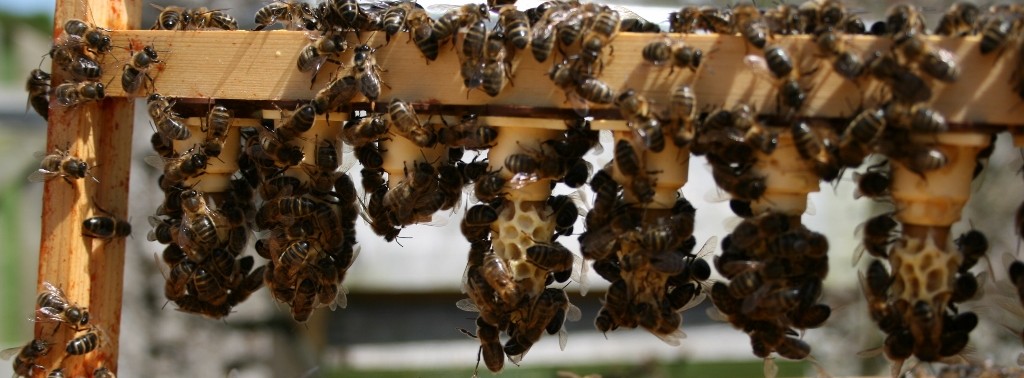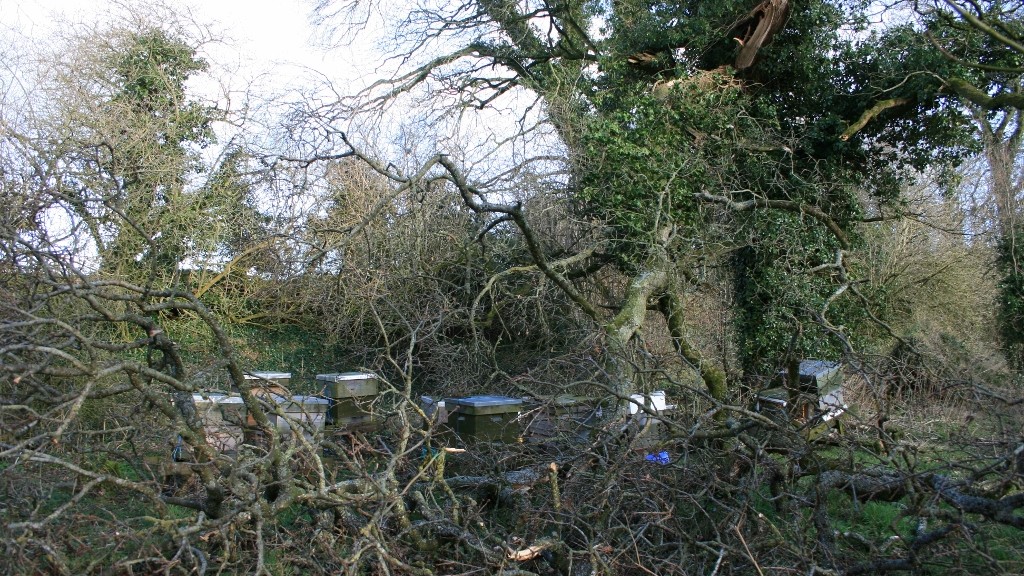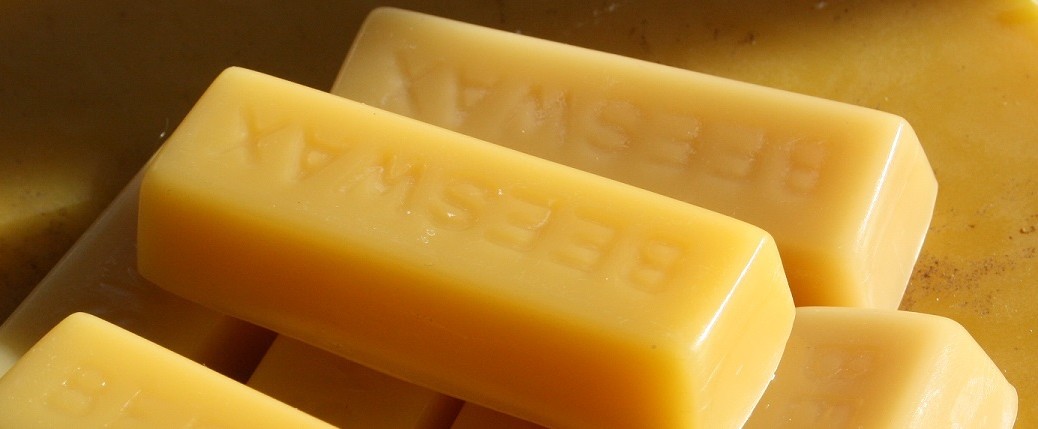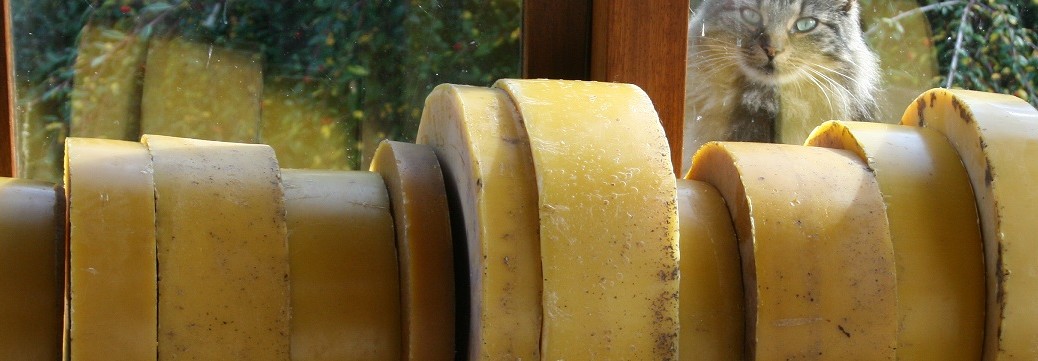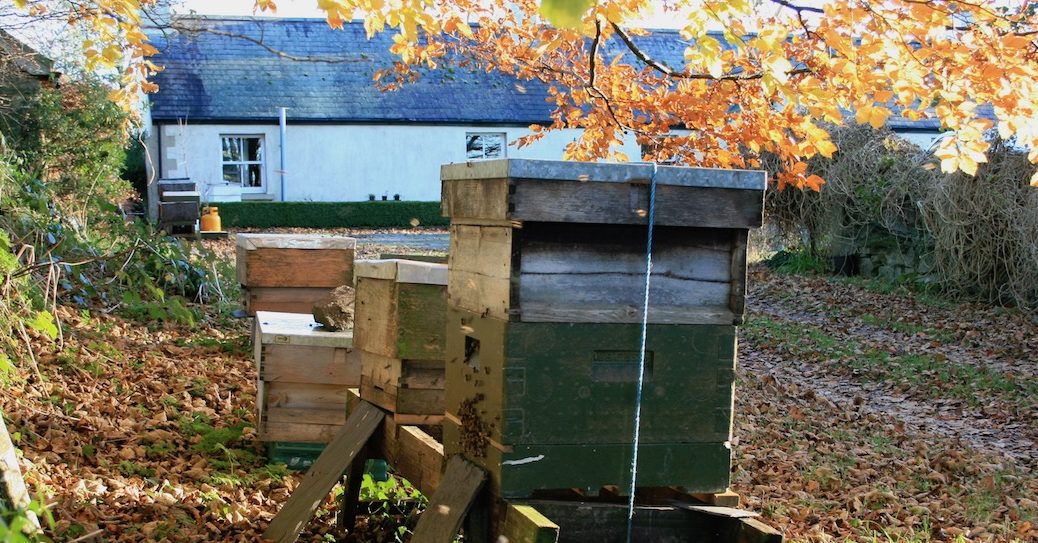Beeswax Wraps can be a lovely Christmas gift. Making them shouldn’t be difficult but if you’ve ever tried it you’ll know that it can he tedious, painful and messy. But here is a nice, simple mess-free method you can use to produce some last minute beeswax Christmas presents in less than an hour. Continue reading Beeswax Wraps made Simple
Category Archives: Things to do in December
Christmas – Bees and Wintering
Christmas is one of the four quarter days which mark the changing of the seasons.
The four quarter days are:
- Lady day or the Feast of the Annunciation 25th March;
- Midsummer’s day around 25th June;
- Michaelmas 29th September;
- Christmas 25th December – lest we forget. Fat chance.
They all approximately coincide with either an equinox or a solstice.
Continue reading Christmas – Bees and Wintering
How to improve your bees
There are all sorts of bees for sale out there – Buckfast, Carniolan, Italian, Russian, Greek – you name it but how can they possibly be better than the locals on their home turf? Think about it, think about the risks in importing diseases and god knows what-all else. Don’t import bees – improve your own.
Click here for more information on the Native Irish Bee.
Here’s how and it isn’t difficult. In fact it’s fun and very rewarding – you will see real results year on year. We used to have some really horrible bees here and only a few hives of them but each year they would chase us round the garden. Now, in the middle of summer I have around 25 hives of bees here and stings are rare.
So make a start this year. Continue reading How to improve your bees
How to Feed a Winter Apidea
If you are overwintering an Apidea you will need to keep a close eye on the stores – especially in a mild winter when the queen may start to lay early. This one in the picture above has a double brood box and was well stocked with ivy honey in autumn but it felt a bit light so I fed it today. If you are wondering why the air vent is left open – that’s because they have it completely propolised and I don’t want to leave the front door wide open.
Here’s what to do with the feed though: Continue reading How to Feed a Winter Apidea
Bee Basics – Mid-Winter Feeding
The deep midwinter is a good time to visit your bees and Christmas day is ideal in many ways!
Bees can be active at quite low temperatures so if you’re a bit on the timid side and your bees are on the feisty side – avail of a veil. But go easy on the smoke.
Acetic Acid Fumigation
If you have old brood frames it is always a good idea to fumigate them before using them again to kill Nosema spores and wax moth. However, be sure they don’t come from a hive where the bees died of AFB. If you aren’t sure, or if frames contain patches of old sealed brood it’s probably best to burn them.
If the wax is old and very black it is best to strip these frames down and add fresh foundation in the spring – you’ll seldom find AFB in nice clean frames. Continue reading Acetic Acid Fumigation
Beeswax Soap Recipe
I used to think that homemade soap would be a great way to use up some of that beeswax mountain. That is until I started to look into the subject and it turns out to be a bit more complicated than I thought.
For a start there’s the matter of CAUSTIC SODA. Note the capital letters there; those are there as a mark of Respect. When using Caustic Soda, be on your Toes because it is a VERY NASTY chemical indeed. Wear gloves, don’t spill it and don’t blame me if you do. Continue reading Beeswax Soap Recipe
Rendering Beeswax
Beeswax is one of the most recalcitrant substances known to man and rendering beeswax is not for the faint-hearted, so gird yer loins and don’t use the kitchen.
For the beekeeper, honey is probably the most profitable part of the harvest but it is not the only one. The next most important crop, for most, is beeswax, of which there are three sources:
- Cappings from your honey extraction;
- Old combs;
- Scrapings from hive.
Beeswax has a thousand and one cosmetic and domestic uses but unless a good price can be assured the most fundamental use for the beeswax crop is as new foundation. Continue reading Rendering Beeswax
Bee Basics – Apiary Site
For anybody thinking about getting bees, an important consideration is – where to put them?
There is no perfect site for bees but there are points to consider – some affect the summering and some affect the wintering. It’s all swings and roundabouts (or snakes and ladders) with bees. Continue reading Bee Basics – Apiary Site
Winter Feeding of Bees
This autumn was a good one for the bees and they seem to have brought in plenty of ivy honey and the hives are very heavy now – at the end of December 2013.
However this is not always the case and December and January are months when the beekeeper needs to keep an eye on the winter stores. It is not possible to feed bees with syrup in the winter because they are simply unable to ripen it so instead if the hives seem light and the bees are clustered close to the top of the frames it will do no harm to put a lump of fondant over the feed hole in the crown board and cover it with a sheet of plastic to stop it from going hard.
If they seem on the edge of extinction, fondant should be placed directly onto the bees. You need to use your imagination and/or ingenuity here if the bees are not directly beneath a feed hole. It may be possible to turn the crownboard so that they are, or fondant can be flattened to a patty which can be placed under the crownboard.
Alternative place an eke on the brood box, then a cake of fondant covered in plastic is placed directly on the bees and the eke is filled up with old jumpers, blankets or sacking and the crownboard is put onto the eke.
Swienty are now selling 15kg blocks of Apifondant which can be set directly over the bees inside an eke as described above. Click here for details of those things
In February you might like to consider giving the bees a pollen supplement such as Neopoll which will give them an early boost. This is especially useful if you are considering taking bees to the oilseed rape as it should prompt the colony into early build-up. Click here for details of Neopoll from Swienty.
You can feed a light 1:1 (1kg:1litre or 1lb:1pint) sugar syrup from St.Patrick’s day onwards using a contact feeder. If you are using a specially prepared beefeed such as Ambrosia you could water this down with a little water for spring feeding.
Click here for how to prepare Wintering Bees
Click here for Michaelmas, bees and wintering
Click here for how to feed a wintering apidea
Click here for mid-winter feeding of bees
Click here for mid-winter oxalic acid Varroa treatment
Copyright © Beespoke.info, 2015. All Rights Reserved.


